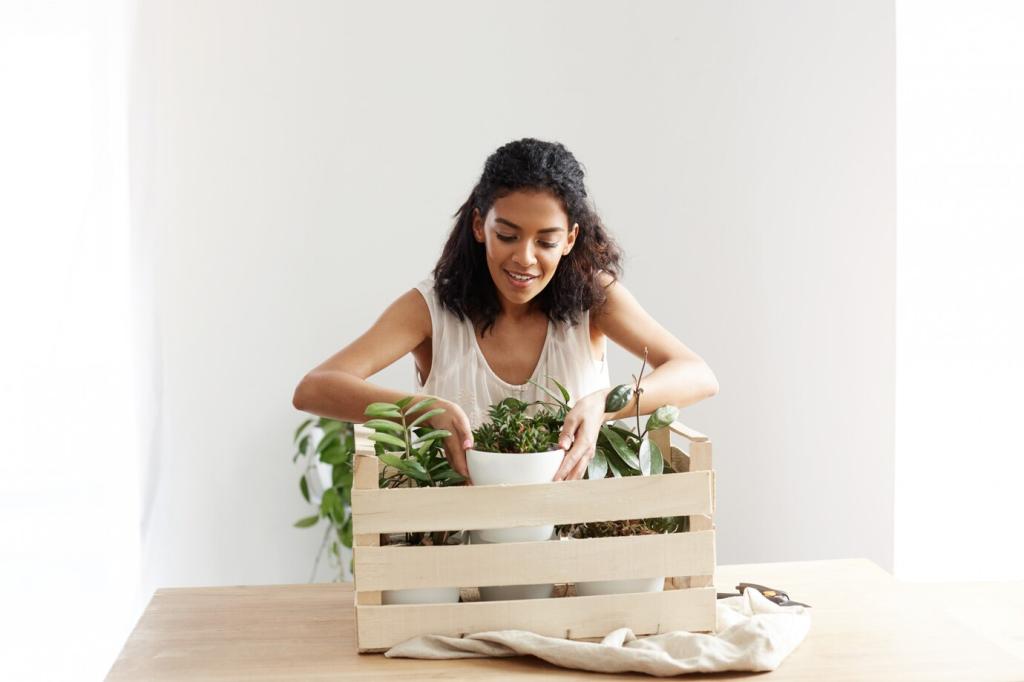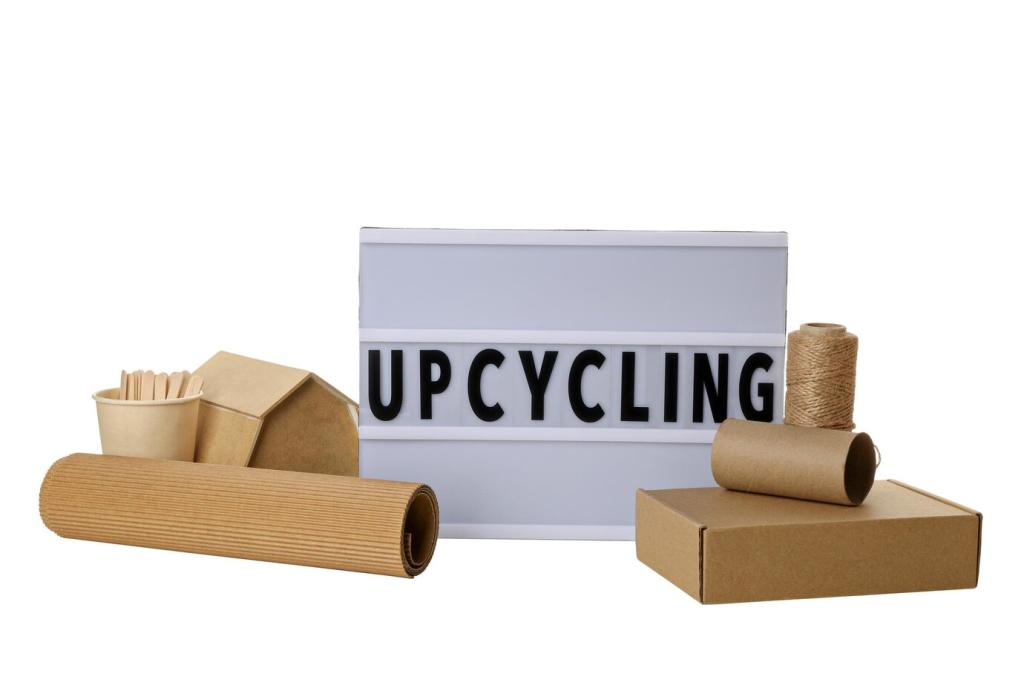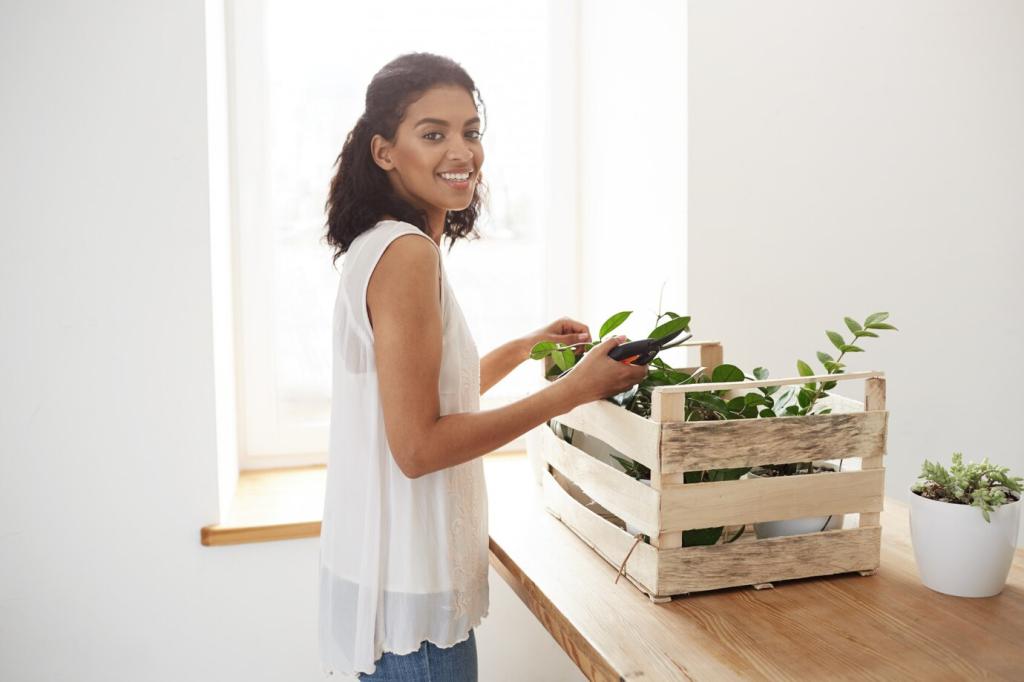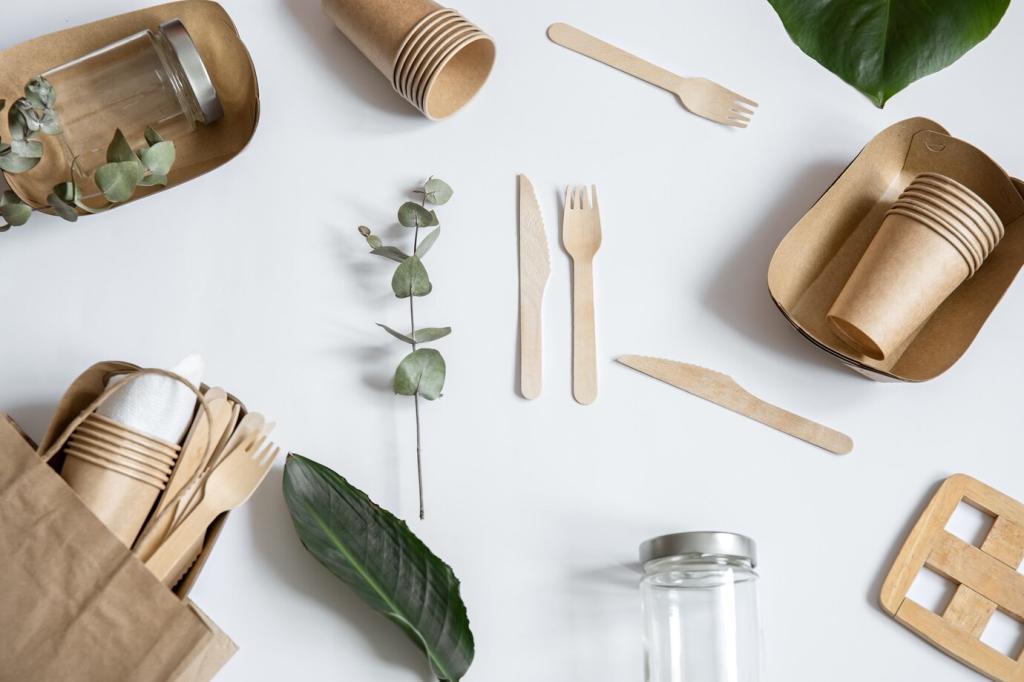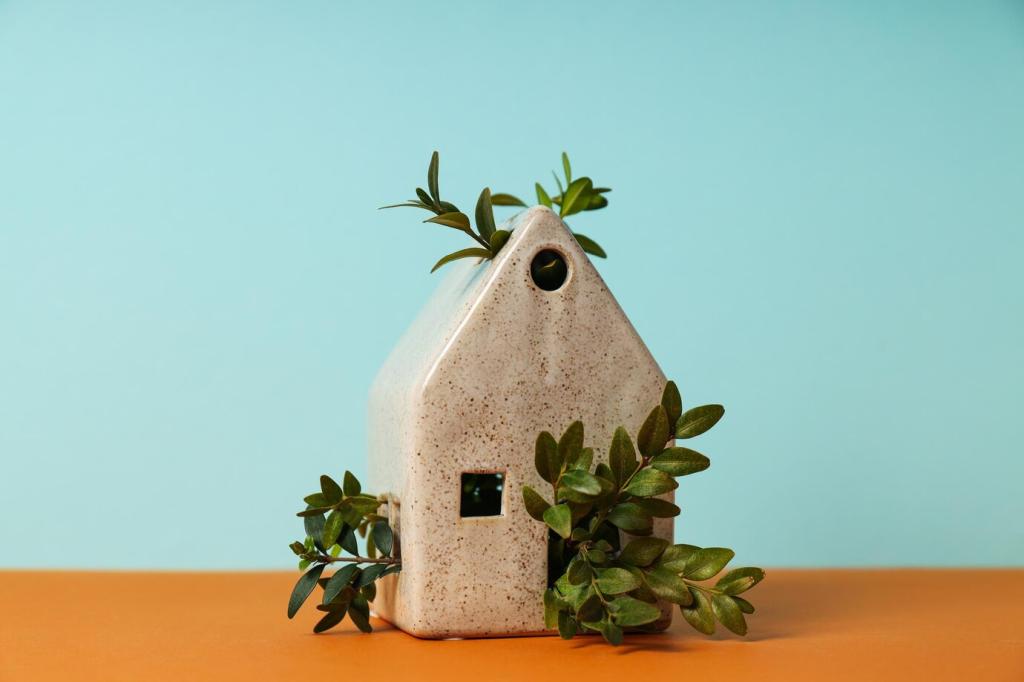Secondhand and Upcycled Wins
Hunt for wooden wine crates, filing racks, and lidded tins. I once found a stack of library card catalog drawers; they now hold cables, stamps, and seeds—each label a tiny beacon of calm.
Secondhand and Upcycled Wins
Sand rough edges, seal with plant-based oil, and add simple casters to transform crates into rolling toy storage. Wash jars thoroughly, add food-safe liners if needed, and enjoy visibility without plastic.

